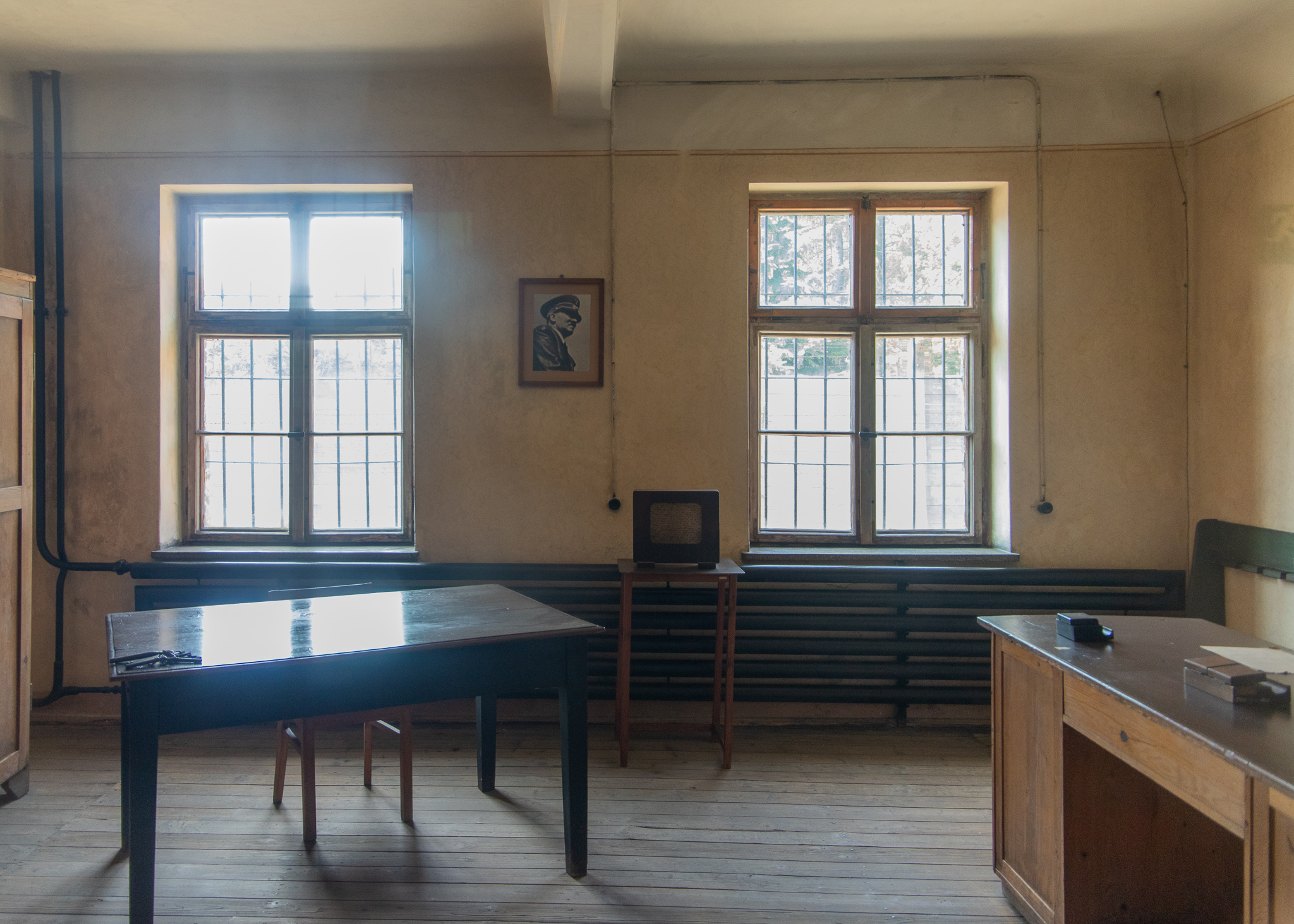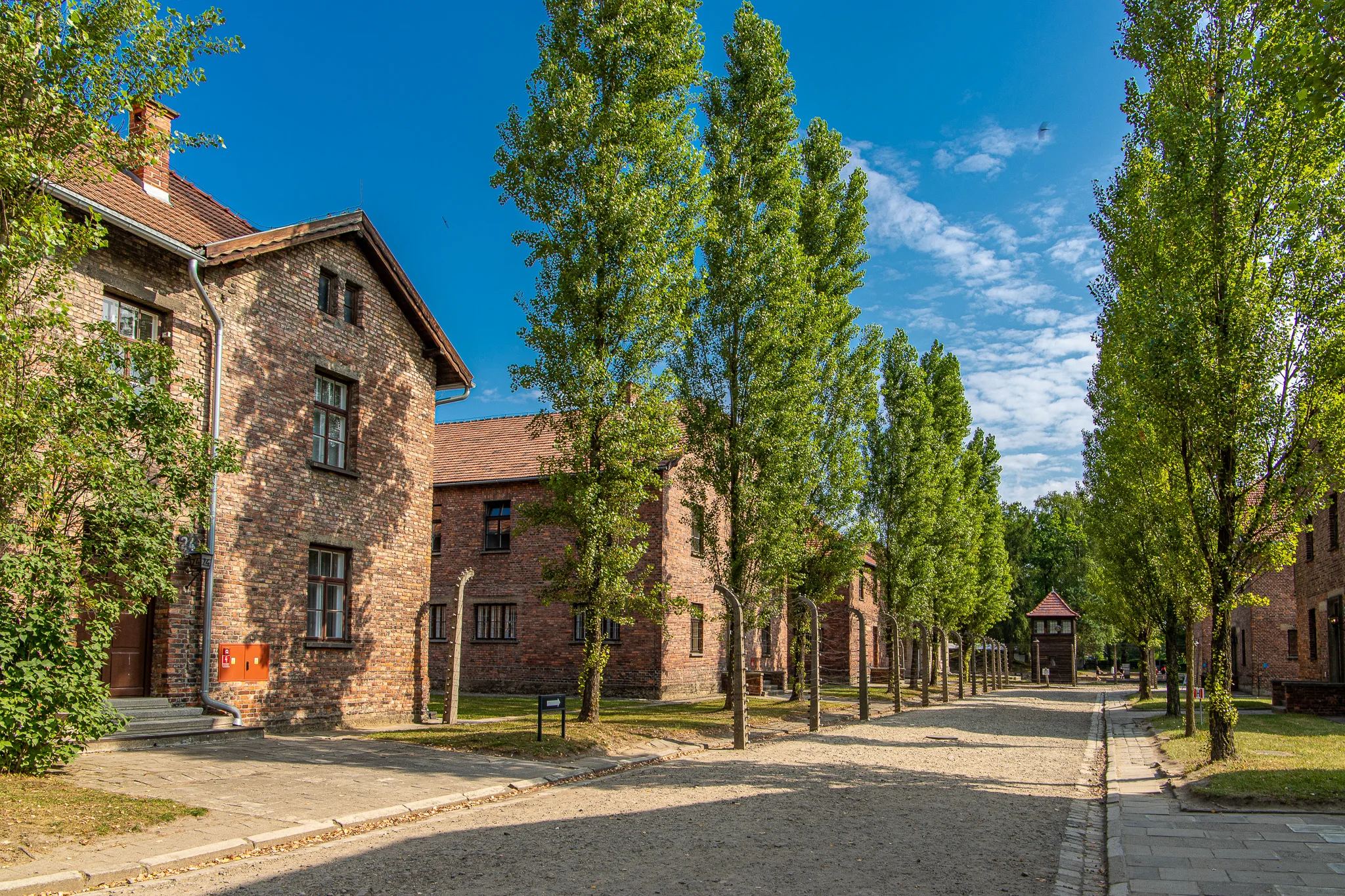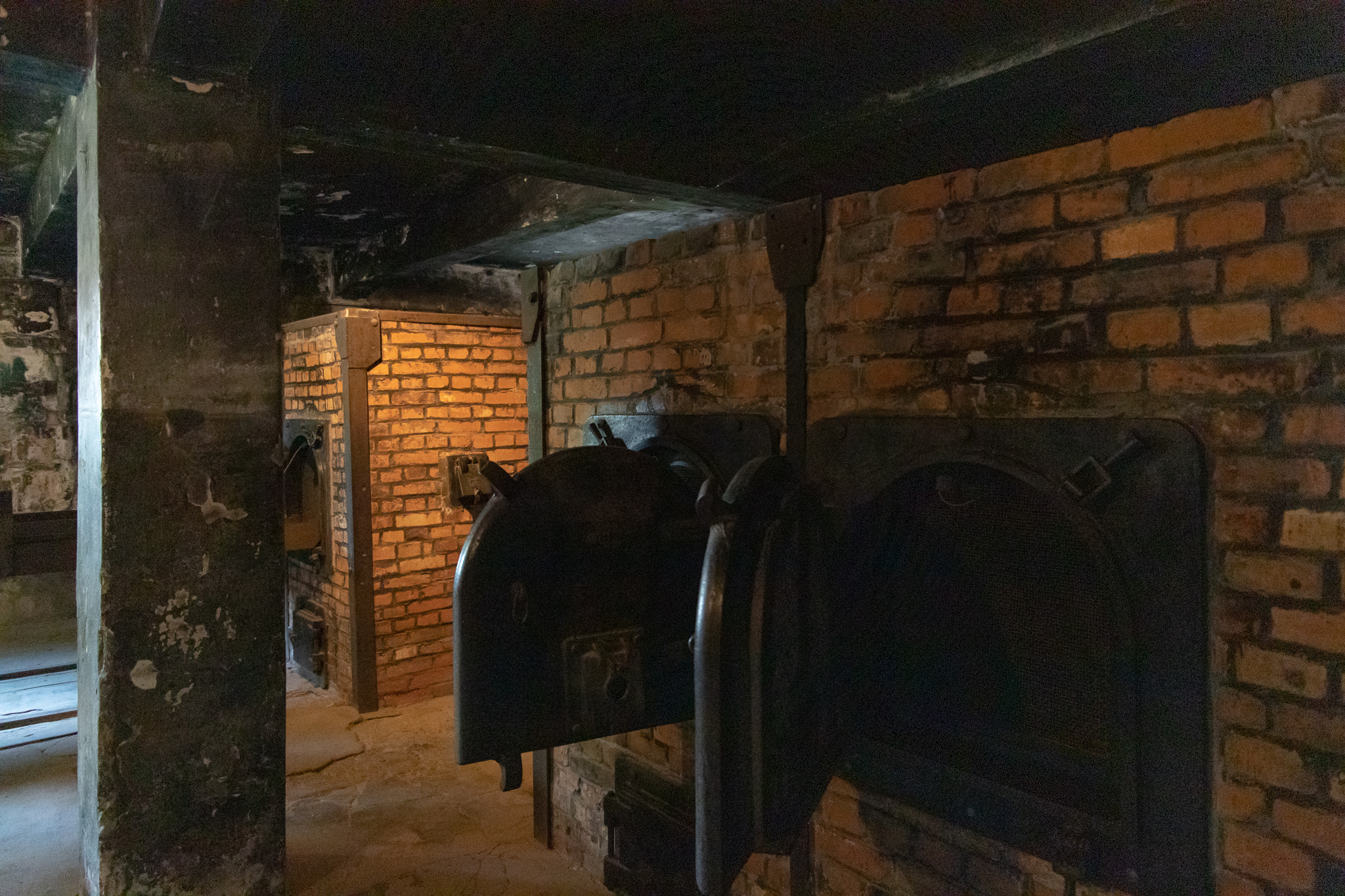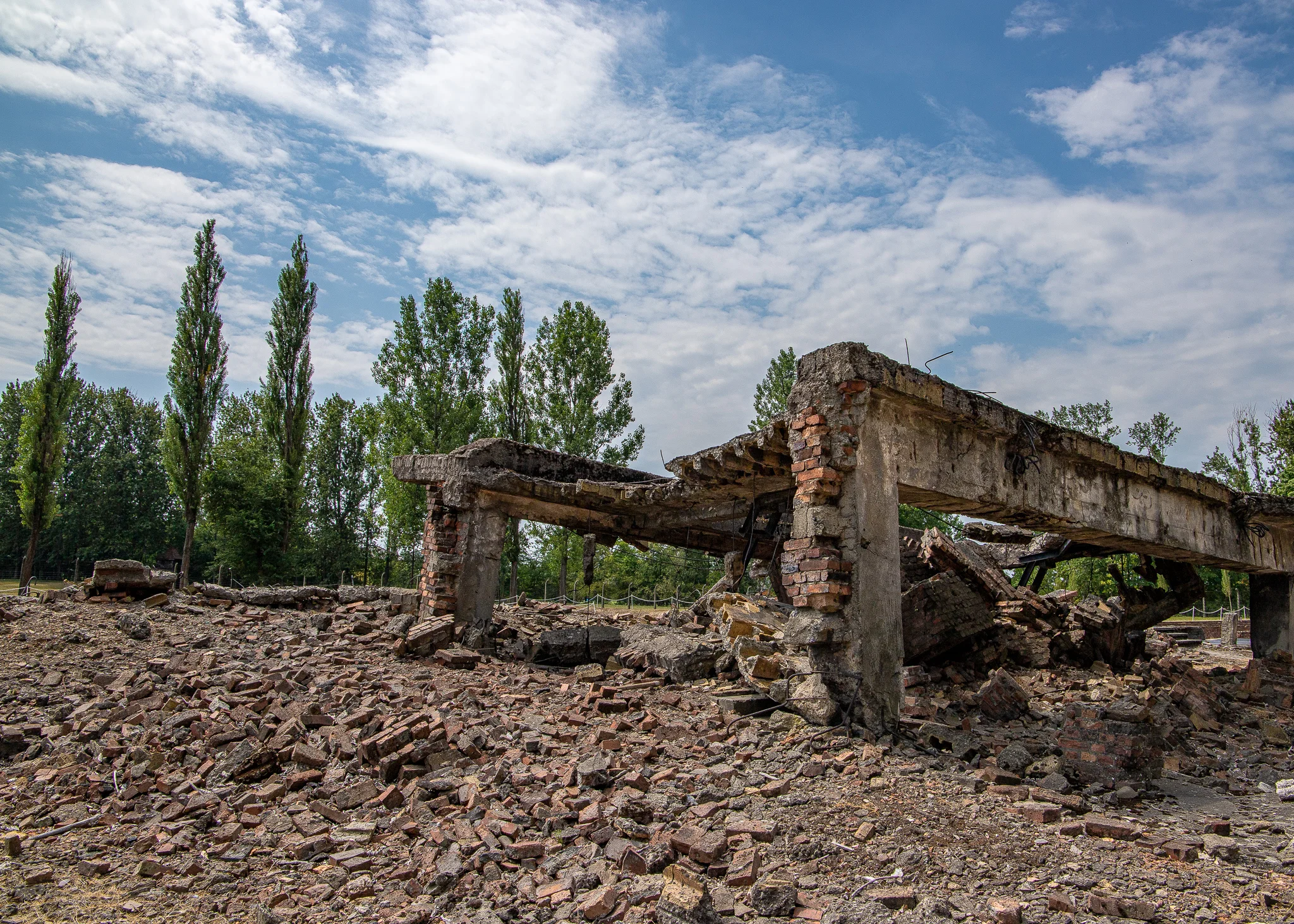I’m not quite sure how to write this post. Having visited the Auschwitz-Birkenau State Museum, I found it to be a moving experience and I’m not in the least bit ashamed to admit that I was moved to tears on numerous occassions. Even now, thinking back on it makes me feel grief at the senseless loss of life and horrors that occured.
At times I felt a little bit awkward taking photos whilst on site, but my own personal thoughts are that it is far, far more important for the events that took place to be documented, discussed and brought to light than risk being forgotten about. Supporting this way of thinking, is that as early as 1947 Poland had founded the Museum on the site of Auschwitz I and Auschwitz II-Birkenau and in 1979 it was named a UNESCO World Heritage Site. Both signify the absolute need for the attrocities that occurred to be laid bare for all to see.
Regardless, what you won’t see are any selfies, no funny remarks and certainly no posting of photographs to Instagram or Facebook. What I consider to be an extremely important historical visit and my sharing of it, is not supposed to get likes, thumbs up or anything else of that ilk, but hopefully instead to make a small contribution to the wider mosaic of helping prevent anything like this every happening again.
Before going to Auschwitz our research from the museum’s website recommended that visits by children should be restricted to only those aged 14 years and older. Given our own circumstances, this meant that both Veronica and I visited separately. In some ways this wasn’t necessarily a bad thing. For the three hours that I was there I didn’t speak to another soul, ensuring that I had plenty of opportunity to absorb but in no way comprehend the awful events that took place.
From a logistics point of view, we initially thought that we would purchase tickets independently. However, at the last minute we instead decided to book a tour with Discover Krakow. This proved to be a really good idea, and is definitely something I would recommed as it takes a lot of the hassle out of visiting. It cost about NZ$40 more (per person) than the cost we would’ve paid solely for an entry ticket and in return we got transport to and from the sites and a guided tour through both Auschwitz and Birkenau. We also got a much better choice of visiting times and it seems that nowadays the people in charge of Auschwitz much prefer visitors coming on pre-arranged tours as opposed to visiting as an individual.
A lot of people probably already know that Auschwitz is actually the German name for the town of Oświęcim that the concentration camp resides near. Situated about one and a quarter hours from Krakow, the Auschwitz concentration camp complex consisted of a number of separate sites including Auschwitz I, Auschwitz II-Birkenau, Auschwitz III-Monowitz and a further 45 or so subcamps.
The first prisoners began arriving in the converted army barracks in Auschwitz in 1940 and the first gassing of prisoners took place in September 1941. While final numbers vary, it is believed that somewhere close to 1.3 million people died in the Auschwitz complex, with close to 90% of them being Jews. The majority of the Jews (c. 900,000) were murdered in gas chambers while a further 200,000 died in the camp, whether through sickness, being shot or other means. In an attempt to put these numbers into some sort of context, more people died in Auschwitz than the entire number of British and American losses in World War II combined.
Auschwitz I was the main administrative camp in Oświęcim and at its peak held around 16 thousand prisoners across 20 hecatres. Here, the administration tasks for the entire complex took place and the first commandant, the notorious Rudolf Höss had complete authority over the camp, its subcamps and the entire SS garrison.
Many of the 155 buildings across the entire complex have been preserved in their original state and Auschwitz I has the best preserved of these. The first thing you notice when walking around the site is the sheer size of the camp and also how eerily silent it is, despite the large numbers of people visiting. While annually the Museum receives more than 2 million visitors, wtih up to 30,000 attending on peak days, for the most part people seem to understand that this is a site that is owed respect. Not all, but most.
Due to the staggering of times and size of both both camps within the Museum, it doesn’t, however, seem overrun. For obvious reasons though, management of existing camp facilities and visitors are going to be ongoing issues for the musuem and their staff to ensure that the site is preserved into the future.
Walking around Auschwitz it’s hard to really imagine just how dire conditions would have been as the grounds are immaculately kept and the beautiful weather in the middle of summer makes comparisons to the freezing cold conditions the prisoners' would’ve experienced in the depths of winter extremely difficult. For me, it wasn’t until I entered the barrack blocks that I began to get some sort of feeling for what took place.
In Auschwitz I, there are 28 two-story blocks measuring approximately 500 square metres each which were designed to hold about 700 prisoners but in practise held up to 1,200. A large number of these are open to visitors although most tours begin in Block 15 which serves as a sort of introduction before moving onto other blocks that have been converted from barracks into museum rooms with differing focuses.
In Block 5, there are displays behind glass devoted to the “Material Evidence of Crime”. This translates as a huge amount of personal effects which were taken from the prisoners who arrived at the camp, including about 12,000 pots and mugs, 3,800 suitcases, 110,000 shoes, 40 kilograms of eyeglasses, 470 prostheses, 570 items of camp clothing and almost two tons of human hair belonging to 40,000 people. Extremely harrowing stuff.
The barracks also show what living conditions were like for the prisoners, both in the “normal” barracks and in Block 11, which was used for executions and torture. In the courtyard between this block and the notorious tenth block, stands a reconstructed Death Wall where thousands of prisoners were executed by firing squad. Block 11, along with the hall containing hair from the victims, are the only two places within the Museum where photos are prohibited.
There are also a large number of Blocks that have exhibits devoted to the various nations that were victimized by the Nazis, as well as the specific groups that were targeted by the Nazis such as Jehovah’s Witnesses, Gypsies and homosexuals.
Block 10’s infamy is due to it being used for medical experiments by German doctors including the “Angel of Death” Joseph Mengele. Mengele focussed many of his experiments on twins, subjecting them to unnecessary amputation of limbs, intentionally infecting only one of the twins with disease, and transfusing the blood of one into the other. Many of the victims died while undergoing these procedures.
Situated within the men’s camps, most experiments carried out by a range of other doctors were done on women and involved a wide range of different methods of sterilisation. Other experiments were also carried out on young children. Whilst the majority of the SS garrison received relatively little schooling, (less than 30% of them received more than elementary education), it is the evil of those with higher education such as these doctors that is most disturbing.
While most of the murders by gassing took place in Auschwtiz-Birkenau, it was in Auschwitz I that the Germans began experimenting to find the most effective way in which to kill its intended victims. The gassings began in September 1941 when about 600 Soviets POWs and 250 sick Poles were killed using the chemical Zyclone B. These initially took place in the specially adapted barracks 1 and 2, before exterminations were moved to the also adapted morgue at crematorium I as it could accommodate more victims.
In late 1941 it was becoming obvious that Auschwitz I was not large enough to accommodate all the prisoners of war and intended Jewish victims. As a result Auschwitz II-Birkenau was constructed to ease congestion at the main camp. At the conclusion of our tour to Auschwitz I, we were bussed three kilometres up the road to the Auschwitz II-Birkenau camp, which at 171 hectares is more than eight times the size of Auschwitz I.
In contrast to Auschwitz I, more than 80% of the original structures of Auschwitz II-Birkenau have either vanished or are in a state of ruin. This is partly due to the wooden structures that were used and also due to Nazi attempts to destroy evidence of what occurred here, where the majority of killings took place within four specifically built crematoria.
In total, 174 barracks were constructed to each hold 750 victims in an area of 390 square metres. This amounted to less than one square metre for each intended victim to sleep in. While life expectancy for most prisoners arriving to Auschwitz was a few months, the majority of those arriving to Birkenau, the death camp, could expect to be executed within hours.
The Germans estimated that 1.6 million people per year could be killed and burnt in the four gigantic gas chambers and crematoria that were constructed. As part of the overall Nazi cover-up of their crimes, two of the gas chambers and crematoria were partially dismantled in late 1944, and blown up in January 1945. A third crematorium was partially burned during a prisoner mutiny in 1944 before later being dismantled, whilst the last crematorium remained operational right up until the the day before the liberation of the camp which occured on January 26, 1945.
Due to liquidation efforts by the Nazi’s, which resulted in tens of thousands of prisoners sent on death marches from the camps, only seven thousand prisoners remained in the camps on January 27, 1945 to be liberated by the soldiers of the 60th Army of the First Ukrainian Front. Here the liberators discovered the corpses of about 600 prisoners who had been shot by the retreating SS or who had succumbed to exhaustion. Over 230 Soviet soldiers died in combat while liberating the Main Camp, Birkenau, Monowitz, and the city of Oświęcim. and Birkenau.
In 1967, the International Monument was erected in Auschwitz II-Birkenau between the ruins of two largest gas chambers, crematoriums II and III. There is a large expanse of space to accommodate ceremonies for visiting heads of state and the annual March of the Living which brings individuals from around the world to Poland (and nearly concurrently to Israel) to study the history of the Holocaust.
I don’t think I know of anyone that would say that they enjoyed their visit to the Auschwitz-Birkenau Memorial and Museum. However, I believe that it is an extremely important place to visit, most especially in light of the fact that as time goes by there are less and less survivors with first hand experience of Auschwitz during the Holocaust. In 2015 at the 70th anniversary, less than 300 survivors attended the commerations, most of whom were in their 90s, with some older than 100.
It is up to all of us now to ensure that what has occurred never repeats itself. This can only be possible by not shying away from the harsh realities of what happened only seventy five years ago and constantly being on guard against the prejudices and hate that exist not just towards the Jewish people, but also a wide range of other religious and minority groups.






























